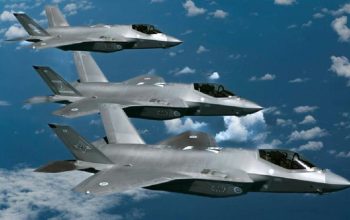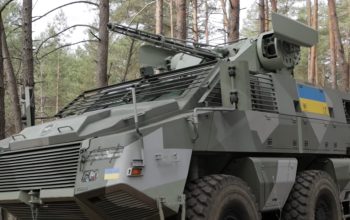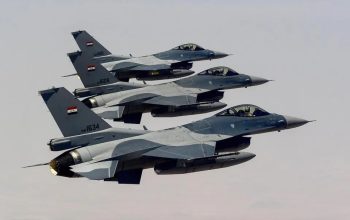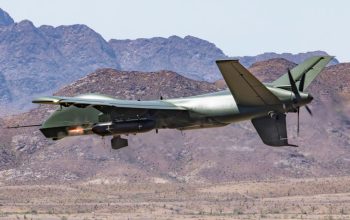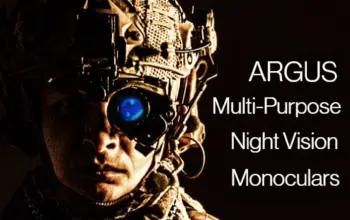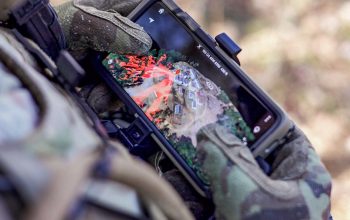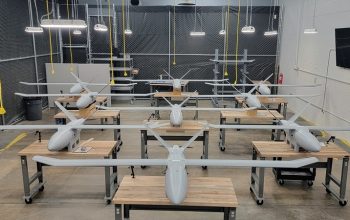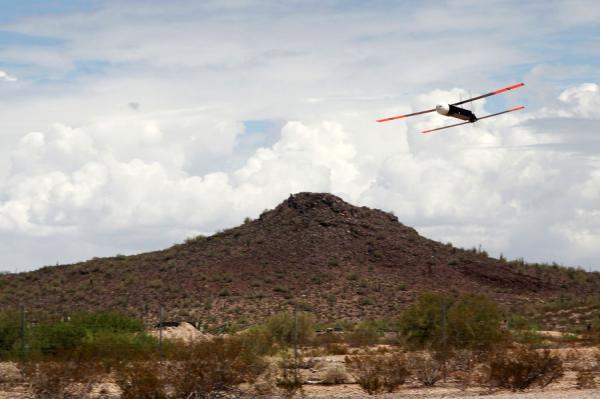
Announced by the Navy Tuesday, the US Office of Naval Research (ONR) has awarded Raytheon a $29.7 million contract to produce a the Low-Cost UAV Swarming Technology (LOCUST) innovative naval prototype (INP). As its name indicates, the LOCUST project is aimed at developing a system for the deployment of small, low-cost swarming UAVs to autonomously overwhelm an adversary. Raytheon subsidiary BBN Technologies is already working on developing technology to direct and control swarms of small, autonomous air and ground vehicles under DARPA’s Offensive Swarm-Enabled Tactics program.
In 2016, ONR launched a swarm of drones from a series of tubes on the back of a truck, like a cyberpunk beehive. A year later, ONR showed the system launched instead from containers on F/A-18 Hornets. LOCUST calls to mind a specific sort of swarm, a kind of small and vicious mass moving through the air, but the technology here appears largely platform agnostic.
These drones, fixed wings with delta-shaped bodies, resemble nothing so much as old wartime footage of prop-powered fighters and bombers fighting in the skies above Europe. They move through the sky like schools of fish and provide protection for the whole formation, even if they do little to protect an individual plane from harm. With swarming, the LOCUST formation can use the same principles of mass and redundancy as in eras past, but without a handful of lives on board each aircraft that’s shot down.
Work will be performed in Tucson, Arizona, and is expected to be completed by Jan. 25, 2020. LOCUST can launch swarming UAVs to overwhelm an adversary autonomously and have been in development and testing phases for several years. Fiscal 2018 research, development, test and evaluation funds amounting to $7.1 million have been obligated to Raytheon upon award of the contract.
